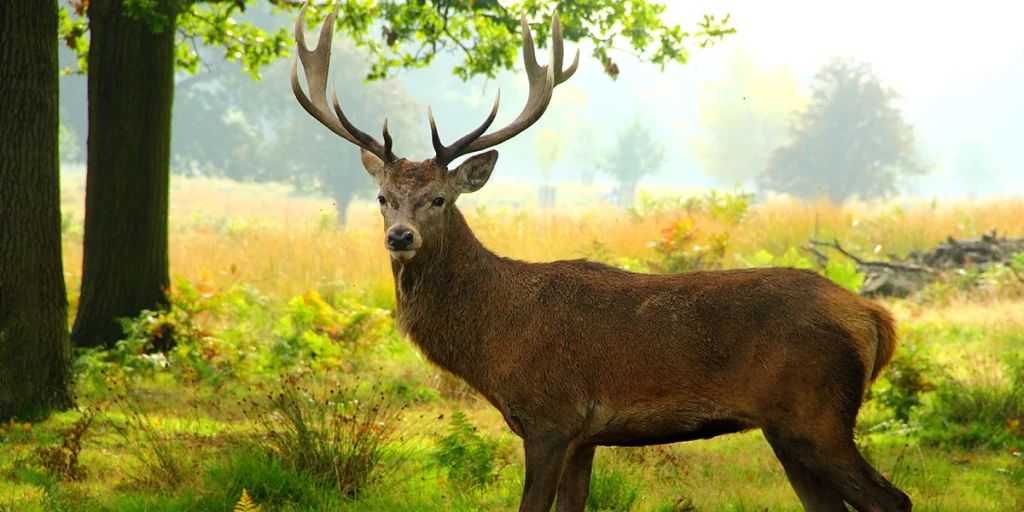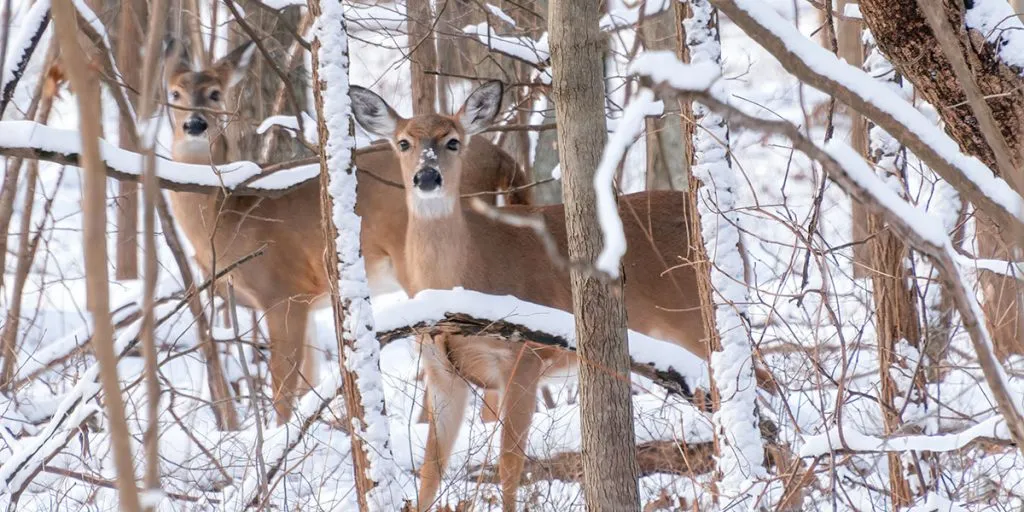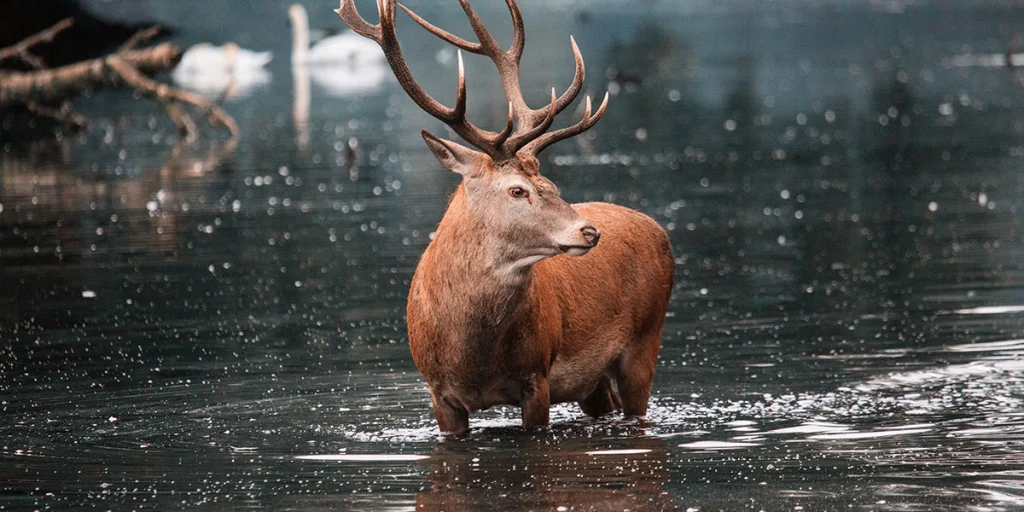When you shoot a deer, the animal will definitely feel pain and experience traumatic stress. How painful a wound like this would be is very difficult to determine. But we can make some educated guesses based on scientific data.
All deer are able to feel pain, but the degree to which deer feel pain is subjective. Biologists believe that relatively high levels of beta-endorphins in their bloodstream allow the animals to suppress pain impulses. White-tailed deer can have up to 10 times more pain-suppressing beta-endorphins than humans.
Science still knows very little about how animals perceive pain. How would a deer experience a shot wound from a hunter, or accidentally being hit by a car? It depends on the individual. What we do know, is that especially for male white-tailed deer, the perception of pain is different:
How Deer Experience Pain
The nervous system of a deer resembles that of most mammals, including that of a human. It is, therefore, reasonable to suggest that most hunted deer experience pain, stress, and shock in a comparable way to us.
However, this simplification brushes over some important factors that impact how a deer perceives injury:
- Blood clotting allows deer to heal faster: Surprisingly high levels of vitamin K1 and K2 in their blood help the animals to heal and stop bleeding faster. This is also why following blood trails can be difficult for a hunter.
- High levels of Beta-endorphins: This protein is essentially a natural painkiller. In deer, blood levels of Beta-endorphins fluctuate, but are never lower than that of an adult human. Bucks in rutting season can have up to ten times more in their bloodstream. This allows them to tolerate more pain while fighting other males.
- Wildlife will always keep going: Instinct and adrenaline can do a lot to keep an injured animal going. The body of a deer is adapted to self-heal quickly. Wounded animals simply keep going until they can’t. To them, pain is a temporary burden they will endure to survive.
Injuries Affect Deer Differently
We do know that deer have blood clotting mechanisms in their body that allow them to heal faster, even with critical injuries. The animals quite literally bleed in a different way, which is an adaptation made because of the rutting season.
Bucks sustain so many puncture wounds during fights with other males, that the fatty reserves in their bodies have adapted to deal with this problem.
A white-tailed deer can store up to ten times more vitamin K1 and K2 in their body than humans. They get these vitamins from their plant-rich diet. It allows the animals to heal wounds faster and helps them stop bleeding in seconds. Essentially, the bloodstream of a deer is like a small self-healing hospital.
Deer Don’t Feel Pain In Their Antlers
Bucks shed antlers annually, a process that is completely painless for the animals. Deer do have sensitive nerve-rich tissue on velvet around the antlers, which they shed in the process. Velvet shedding is painless because the bloodstream is completely cut off when the antlers are fully grown.
As soon as the antlers stop growing, the nerves in the antlers stop functioning. This means that antler shedding is a painless process for a deer. The buck will simply scrape off the velvet and shed the antlers in a painless way, but there might be some irritation from itching.
The shedding process is repeated annually in the life of an adult buck, so it’s a good thing that it’s completely painless for the animals. You do not have to feel guilty about animal suffering when you pick up the shedded velvet or antlers.
Pain Is A Subjective Experience
Living in nature is never without risk, especially when you’re a deer. The animals have adapted their life to running from predators, allowing them to be fast on land and in the water. Even the fawns will hide for weeks in order to survive.
Feeling less pain and healing wounds fast are just two more adaptations for the deer to help them in their quest for survival. While we don’t fully understand yet how the animals perceive pain impulses, we can safely say their pain tolerance is way higher.
But even pain tolerance differs from one individual to the other. An adult buck in rut is able to tolerate so much more hurtful injuries than a helpless baby deer hiding in the grass. Even between two individual bucks, pain tolerance can differ, similar to how one human is able to accept a lot more pain than another human.



